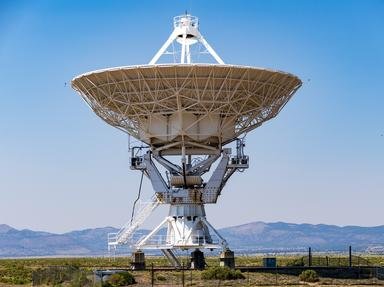Quiz Answer Key and Fun Facts
1. If it wasn't for me, the Earth would be getting bombarded with asteroids, and terrestrial life would have never evolved as far as it did. What am I?
2. Some people have suggested that the universe will come to an end when its ever-increasing rate of expansion causes all matter to basically fly apart. What is the term applied to this theory?
3. Over the years there have been several hypotheses about other, yet undiscovered, planets being part of our solar system. Which of the following was not one of those would-be tenth planets?
4. We all know the Asteroid Belt which lies between Mars and Jupiter. There is also another "belt" of debris which lies outside Pluto's orbit, known as the _____ Belt
5. In billions of years, when it nears its death, widespread theory has it that our sun will first shift to what other color?
6. We are all familiar with the rings of Saturn. Which of the other gas giants has no rings?
7. The terms 'event horizon' and 'singularity' relate to what astronomical bodies?
8. Which of the following is not a type of nebula?
9. Which of the following word pairs refers to a body's position in orbit around the Sun?
10. All stars eventually die and turn into black holes.
Source: Author
prologic
This quiz was reviewed by FunTrivia editor
crisw before going online.
Any errors found in FunTrivia content are routinely corrected through our feedback system.

